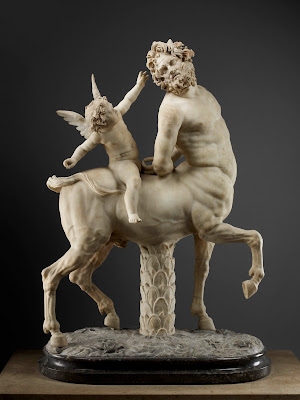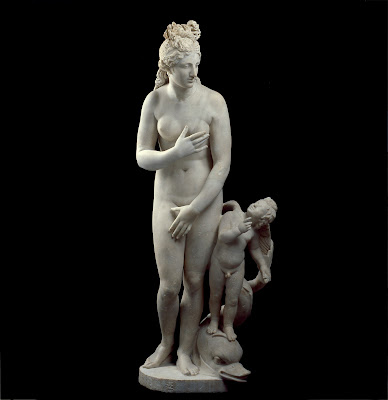 |
| View from Via dei Fori Imperiali, photo by Giulio Menna |
It is
so easy to get bogged down by the negative things about this city. Every city
on earth has its unpleasant aspects, but Rome’s can be so glaringly obvious and
pervasive (especially as one transitions from happy-go-lucky expat to permanent
resident) that it is easy to lose sight of the innumerable wonderful things, the
things that made most of us expats move here in the first place.
In
the space of two weeks, I have been blessed by the appearances of a number of
friends, none of whom live in Rome, but all of whom have a connection with it. Cristina
and Tim are ex-expats, who lived here for years and were some of my first
friends when I arrived. They have both moved on to have fabulous careers
outside Italy, but can’t help feel that magnetic pull to allure of this city,
and are even tempted, every so often, to chuck it all and come back (although –sadly for me– I know they won’t).
Another
is India, a former yoga student of mine who spent 18 magical months here as an
adolescent and now, at 20, wouldn’t be able to survive a year without at least
one week spent in Rome. She visits every July and her enthusiasm for Rome is
contagious.
And then there’s Maeve. Were it not for a blossoming opera career in New York, she would have taken up residence in this inimitable town long ago. But, as with most musicians, career comes first, and so she’s content to visit once a year, study the language and soak up the culture. Spending time with these four amazing people has renewed my delight in Rome. After a couple of months of more griping than usual about this fair city (and its ever so difficult residents), thanks to my friends I have returned to my “default setting” of being enchanted with my adopted hometown.
 |
| Detail of Villa Medici, photo by Patrizia Ferri |
And
this led me to think about the people I know who aren’t happy to come here only
for short visits. People who, like me, can’t help but heed that insistent voice
that tells us there is no other place for us, at least at this moment in time,
than Rome*. That to live anywhere else would be to deny one of the deepest
desires of our souls.
People
like my new friend Margaret, who even as I write this is plotting her move
here. Although at a completely different stage in her life than I was as I
schemed to find a way to live here 8 years ago, she nevertheless reminds me of
exactly how I felt when the thought of living in Rome was not yet a reality.
People
like travel writer and fellow blogger Keane Li who finds charm and fascination
in every angle of the city, and captures them so compellingly in his writing. He
asked me recently, in a message that I have shamefully yet to reply to, what
advice I could give him on how to make the transition to live here permanently.
Maybe I haven’t replied because it’s a big question. There are so many things
to consider, including finances, the language barrier, work permits, the bureaucratic
nightmare of becoming a legal resident, the horrifying discrepancy between
salaries and living expenses, not to mention the shock of up and leaving your
home, job, family, friends and culture in one fell swoop.
But,
unlike most big questions, this one has a short answer:
Do
it.
At
the risk of sounding like a decades-old marketing campaign, just do it. There
will be so many people, both those who have attempted such a move and those who
would never dare, who will tell you it’s not possible, or better yet, that it’s
not worth it. That it’s a big risk, it’s financially draining, it stagnates
your career, and so on. All this, and for what? Just to live in a foreign
country? Life will still go on, just as before.
 |
| Detail of the Fountain of the Triton by Gianlorenzo Berlini, photo by SpirosK |
Yes,
life will go one, and sometimes more frustratingly than before (I wrote about
this in a guest post not long ago) and it’s important not to imagine that life
will be as easy and deliciously carefree as Woody Allen and Julia Roberts make
it seem in the movies. But naysayers who get off on telling others how things can’t be done are generally just
smarting because their own experiences were less than ideal.
Don’t
listen to them. You have a desire, a calling, even. You can’t explain it; you
just know. Don’t let anyone change your mind. Hearing other people’s
experiences is necessary, but ultimately, only you know what is right for you.
I
felt this unexplainable calling too, from a very young age, as I’ve written about before. I didn’t know why I was supposed to be here. I just knew that I had
to come, and stay. (PS Coming is easy; it’s the staying that is the hard part.)
So come I did, and let me tell you, the first year was hard, nothing like the month-long study trips I had taken years
before. But I toughed it out; I just knew I was supposed to be here, and now I
realize why: his name is Claudio. (Not that he’s the only reason, of course! My lifestyle
here alone is enough of a reward.)
I
don’t intend to suggest that everyone who moves to Rome should stay here
indefinitely. Some people come for six months or a year, get their fill of
gelato and amatriciana and move back
home, richer and wiser for their experiences. And there are others who stay 10,
20 years, or even their whole lives. Whatever the case, if you want to be here,
come. It goes without saying, be prepared. Save up some money, learn the basics
of the language, have a plan for how to make money, and don’t be too flippant
about legal requirements (it’s not 2005 anymore), but just come. Things will
work themselves out.
 |
| Photo by Mark Turner |
It
won’t be without sacrifices. You may end up living on a fraction of what you
are used to in your home country, and some may see this as a step down on the
socio-economic ladder, but I see it as an opportunity to learn to live with
less. You’re used to living in a two-storey house? Try a cozy one-bedroom for a
change, or move in with roommates, making new friends in the process. Think
you can’t live without your SUV? Discover the freedom of commuting by bicycle.
What you will receive in cultural, gastronomic and artistic wealth will more
than make up for any temporary material lack you might feel.
I
truly believe that when you are doing what you are meant to be doing, things
have a way of working out. Not always exactly as you had envisioned, but
brilliantly nonetheless. So if you really, really want it, take the risk. Give
notice. Buy those tickets.
In
short, just come. And be sure to look me up when you get here.
*Or
Paris, or Tuscany, or Spain, or wherever it is your heart wants to be

































